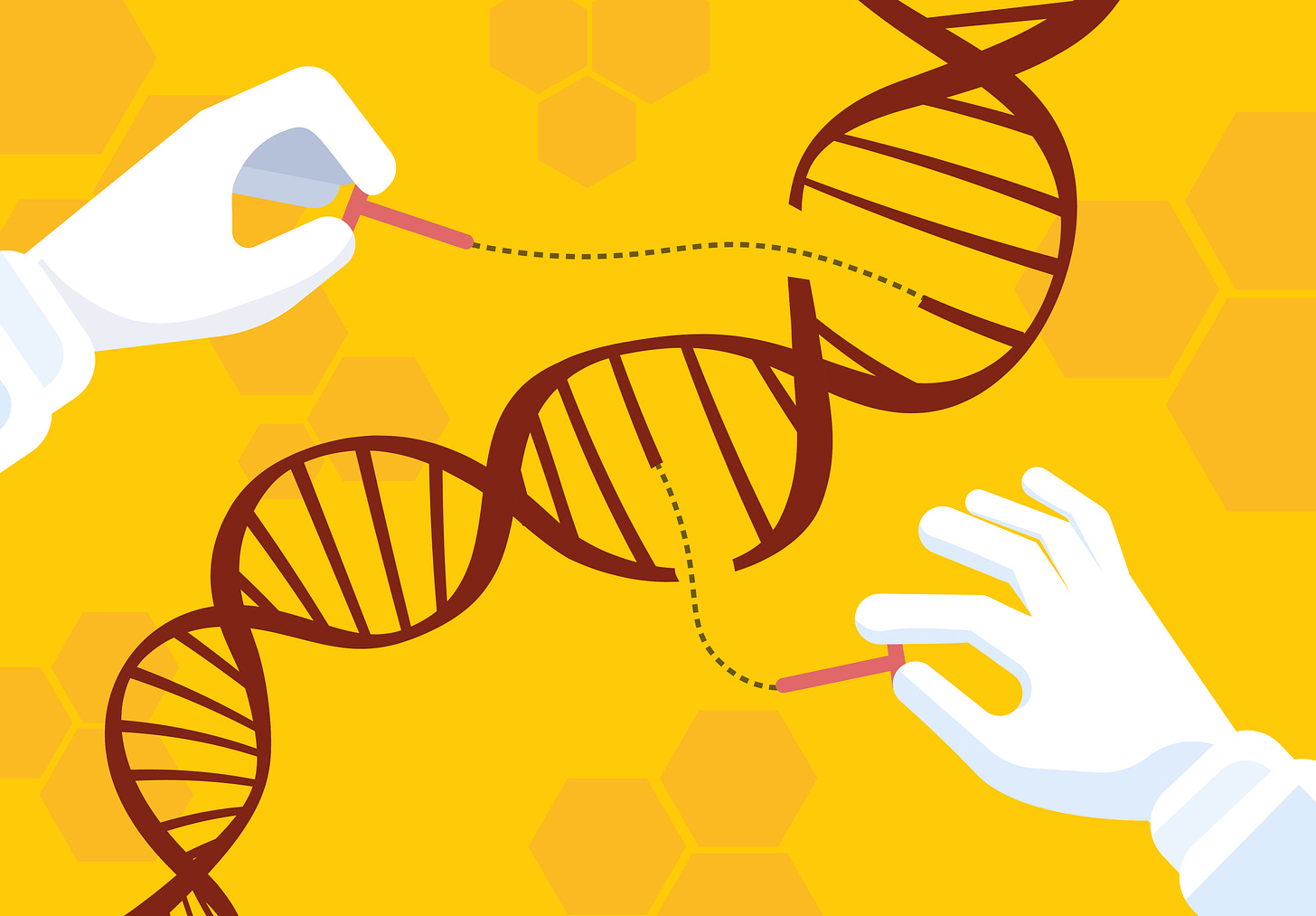"Chinese researcher claims first gene-edited babies". On November 26, 2018, the world was stunned by this scoop from the Associated Press. Dr He Jiankui, the person behind the experiment, was sentenced to three years imprisonment and a three-million-yuan fine shortly after the news broke. The entire science world was divided into two poles following the debates on the ethical and moral issues of "gene-edited babies". So, what exactly is gene editing? And what is the history behind this controversial discovery? Let's find out.
Gene editing, or genome editing, as the name suggests, is a process of editing the genetic codes. As we know, deoxyribonucleic acid (DNA) is the molecule that carries the genetic information for the development and functioning of an organism. Gene editing helps to modify these DNAs by cutting or replacing them, thereby altering the character of the organism.
Gene editing has its roots as early as the days humans started cultivating crops and rearing animals. Humans artificially bred crops and animals to produce yields and progeny with desired features. But the real science behind this was found by a monk who lived in a small monastery, Gregor Johann Mendel. Mendel, during the 1850s, experimented with pea plants to understand how hereditary characters are passed through the generations. His experiments were mainly focused on the traits like height and colour in the pea plant. He was the first to establish the principle of inheritance, and the results found by Gregor Mendel shed light on a new branch of science.
In 1953, American biochemist Arthur Kornberg succeeded in synthesising DNA and ribonucleic acid (RNA) in a test tube and was later awarded the Nobel Prize for the same.
The scientific community back then was not ready to accept the findings of Mendel, and it was not until the early 20th century the word "gene" and "genetics" was used for the first time. The DNA molecule was first identified in the late 1860s by Swiss chemist Friedrich Miescher. Following the findings of Miescher, further experiments were conducted focused on the DNA molecule. James Watson's and Francis Crick's discovery of the double helix structure of DNA marked a milestone in the history of science and served as the backbone for every future discovery in the field of genetics.
In 1953, American biochemist Arthur Kornberg succeeded in synthesising DNA and ribonucleic acid (RNA) in a test tube and was later awarded the Nobel Prize for the same. In the year 1970, another American biochemist and Nobel Prize winner Paul Berg isolated DNA from different sources and successfully cut and replaced them, forming recombinant DNAs. Berg identified the potential threats of this technology, and until the Asilomar Conference in California in 1975, all gene editing experiments were stopped. A group of around 140 professionals, including lawyers, physicians and scientists, attended the conference and came up with practical and ethical guidelines regarding the technology.
The first transgenic animal was created in 1981 by Thomas Wagner and his team at Ohio University. They transferred the gene of a rabbit into the mouse genome using a method known as "DNA microinjection." It was just the beginning. The year 1982 got marked by the creation of synthetic insulin - the first-ever genetically engineered human drug. Cloning and GMO (Genetically Modified Organisms) were two developments that happened in the late 1980s. The first genetically modified crop, Bt Corn, appeared in the fields of America in the year 1988. But it was not until 1994 that a genetically modified crop, a tomato named "Flavr Savr", actually hit the shelves of markets. However, the genetically modified tomato didn’t succeed in the market as scientists expected it would. People were literally afraid of genetically modified products.
The CRISPR (Clustered Regularly Interspaced Short Palindromic Repeats) technology, discovered by Jennifer Doudna & Emmanuelle Charpentier, enabled scientists to precisely cut and replace DNA sections.
"Dolly" the sheep, the project led by Ian Wilmut of the Roslin Institute, was one of the biggest stories of 1996. Dolly was a huge achievement, as it was the first mammal to be cloned from an adult cell with the same genetic identity.
The Human Genome Project, which stretched from 1990 to 2003, successfully mapped and documented the entire human genome. In 2003, the ENCODE (Encyclopedia of DNA Elements) project was kicked off, aiming to identify functional elements in the human genome.
2012 was the year of a landmark discovery in the field of genetics and gene editing. The CRISPR (Clustered Regularly Interspaced Short Palindromic Repeats) technology, discovered by Jennifer Doudna & Emmanuelle Charpentier, enabled scientists to precisely cut and replace DNA sections. CRISPR technology revolutionised gene editing by making it cheap and easy to use. From medicine to agriculture, the possibilities of the technology are limitless. On the other hand, discussions on the dangers and potential risks of using it for unethical practices like modifying human babies to alter traits such as beauty or intelligence stand valid.
The science community itself is at opposite poles regarding the use of gene editing tools on humans. Nevertheless, experiments to further strengthen the technology might help to find permanent solutions for many incurable fatal diseases, including HIV, cancer and sickle-cell disease.
Thank you for listening. Subscribe to The Scando Review on thescandoreview.com.
Happy Teaching!














Editing the Codes of Lives: The History of Gene Editing